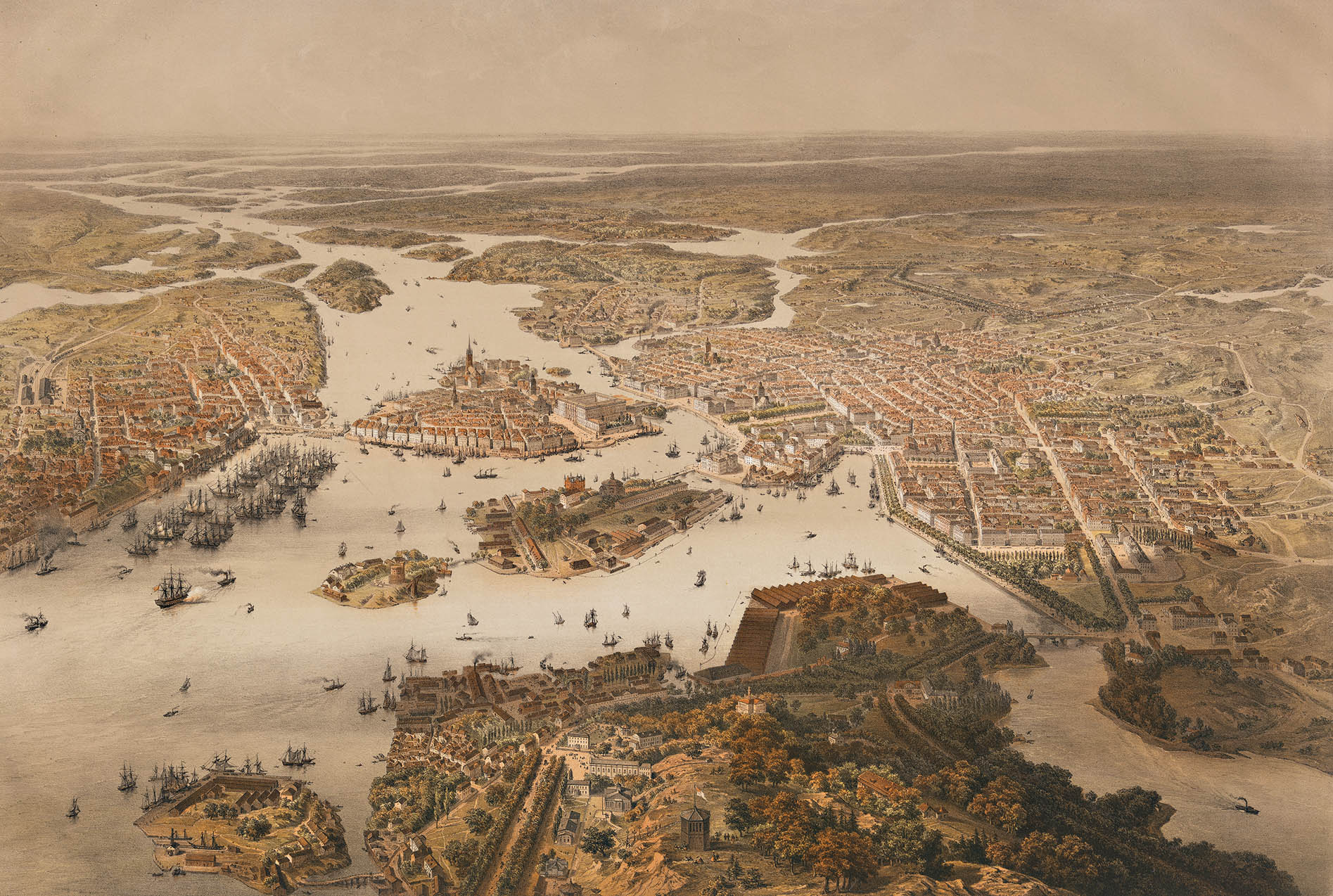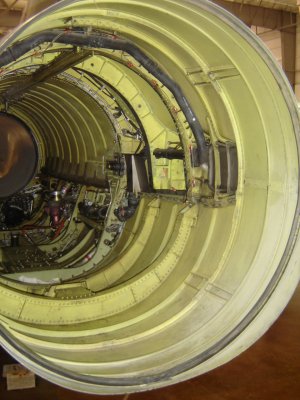|
Mindre Teatern
Mindre teatern (''The Smaller Theatre''), Nya teatern (''The New Theatre''), Lindeberska teatern (''The Lindeberg Theatre''), was a Swedish theatre at Kungsgatan in Stockholm, active 1842–1863. The building was used as localities for the Royal Dramatic Theatre in 1863–1908. History The theatre was founded by Anders Lindeberg in 1842 after the theatre monopoly of the Royal Dramatic theatre was abolished. It was called Mindre teatern (The Smaller Theatre), as the old Royal Dramatic theatre was called "The Big Theatre", Nya teatern (The New Theatre), and also Lindeberska teatern (The Lindeberg Theatre), after its founder. It became a popular theatre, which rivaled the Royal Theatre. In 1863, the theatre was sold to the Royal Theatre and dissolved. The building itself became the new house for the Royal Dramatic Theatre, who also employed many of the actors, and continued as such for 45 years. It was the fourth building to serve as localities for the royal theatre. When the roya ... [...More Info...] [...Related Items...] OR: [Wikipedia] [Google] [Baidu] |
Stockholm
Stockholm () is the Capital city, capital and List of urban areas in Sweden by population, most populous city of Sweden as well as the List of urban areas in the Nordic countries, largest urban area in the Nordic countries. Approximately 1 million people live in the Stockholm Municipality, municipality, with 1.6 million in the Stockholm urban area, urban area, and 2.4 million in the Metropolitan Stockholm, metropolitan area. The city stretches across fourteen islands where Mälaren, Lake Mälaren flows into the Baltic Sea. Outside the city to the east, and along the coast, is the island chain of the Stockholm archipelago. The area has been settled since the Stone Age, in the 6th millennium BC, and was founded as a city in 1252 by Swedish statesman Birger Jarl. The city serves as the county seat of Stockholm County. Stockholm is the cultural, media, political, and economic centre of Sweden. The Stockholm region alone accounts for over a third of the country's Gross d ... [...More Info...] [...Related Items...] OR: [Wikipedia] [Google] [Baidu] |
Sweden
Sweden, ; fi, Ruotsi; fit, Ruotti; se, Ruoŧŧa; smj, Svierik; sje, Sverji; sju, Sverje; sma, Sveerje or ; yi, שוועדן, Shvedn; rmu, Svedikko; rmf, Sveittiko. formally the Kingdom of Sweden, is a Nordic countries, Nordic country located on the Scandinavian Peninsula in Northern Europe. It borders Norway to the west and north, and Finland to the east. At , Sweden is the largest Nordic country and the List of European countries by area, fifth-largest country in Europe. The Capital city, capital and largest city is Stockholm. Sweden has a population of 10.5 million, and a low population density of ; around 87% of Swedes reside in urban areas in the central and southern half of the country. Sweden’s urban areas together cover 1.5% of its land area. Because the country is so long, ranging from 55th parallel north, 55°N to 69th parallel north, 69°N, the climate of Sweden is diverse. Sweden has been inhabited since Prehistoric Sweden, prehistoric times, . T ... [...More Info...] [...Related Items...] OR: [Wikipedia] [Google] [Baidu] |
Kungsgatan, Stockholm
Kungsgatan ( Swedish for "King's Street") is a street address in central Stockholm. It was formerly a red-light district and is currently a busy shopping street. At its western end it is connected to Kungsholmen by Kungsbron bridge, from where it stretches east to Stureplan public square. It is intercepted by the streets Vasagatan, Drottninggatan, and Sveavägen. Two streets pass over it: Malmskillnadsgatan on Malmskillnadsbron bridge and Regeringsgatan on the Bridge of Regeringsgatan. Kungsgatan passes by Hötorget public square where Stockholm Concert Hall is located. It is also flanked by two buildings, the ''Kungstorn'' (King's towers), each about 60 metres tall. Kungsgatan was dug through the Brunkebergsåsen esker (a natural ridge) in the early 20th century and inaugurated in 1911. Today it is a lively shopping street flanked by cinemas, cafés, and other shopping facilities. Hötorget station, on the Green line of the Stockholm metro, is located at the i ... [...More Info...] [...Related Items...] OR: [Wikipedia] [Google] [Baidu] |
Royal Dramatic Theatre
The Royal Dramatic Theatre ( sv, Kungliga Dramatiska Teatern, colloquially ''Dramaten'') is Sweden's national stage for "spoken drama", founded in 1788. Around one thousand shows are put on annually on the theatre's five running stages. The theatre has been at its present location in the Art Nouveau building at Nybroplan, Stockholm, since 1908. The theatre was built by the architect Fredrik Lilljekvist. Famous artists like Carl Milles and Carl Larsson were involved in making the decorations, and some of the interior decorations were made by Prince Eugen. The theatre's acting school, the Royal Dramatic Training Academy, produced many actors and directors who would go on to be famous, including Gustaf Molander (who also taught there), Alf Sjöberg, Greta Garbo, Vera Schmiterlöw, Signe Hasso, Ingrid Bergman, Gunnar Björnstrand, Max von Sydow, and Bibi Andersson. The school was split off as a separate institution in 1967 (see Swedish National Academy of Mime and Acti ... [...More Info...] [...Related Items...] OR: [Wikipedia] [Google] [Baidu] |
Anders Lindeberg
Anders is a male name in Scandinavian languages and Fering North Frisian, an equivalent of the Greek Andreas ("manly") and the English Andrew. It originated from Andres via metathesis. In Sweden, Anders has been one of the most common names for many centuries, earliest attested in 1378. It was common for priests and farmers during medieval times. According to Statistics Sweden, as of 31 December 2002 it ranks 4th among the male names. The great frequency of this name at the point in time (around 1900) when patronymics were converted into family names is the reason why 1 out of every 30 Swedes today is called Andersson. The name day of Anders in the Scandinavian calendar is 30 November, and in the old peasant superstition that day was important for determining what the Christmas weather would be. If it was very cold on 30 November there would be much sleet on Christmas (and vice versa). In Denmark Donald Duck's name is ''Anders And''. The Fering name Anders may have b ... [...More Info...] [...Related Items...] OR: [Wikipedia] [Google] [Baidu] |
Royal Swedish Opera
Royal Swedish Opera ( sv, Kungliga Operan) is an opera and ballet company based in Stockholm, Sweden. Location and environment The building is located in the center of Sweden's capital Stockholm in the borough of Norrmalm, on the eastern side of Gustav Adolfs torg across from the former Arvfurstens Palats, now Ministry for Foreign Affairs. It lies on the north side of the Norrström river and is connected to the Royal Palace through the Norrbro bridge. Further historically as well as architecturally important buildings in the close neighborhood are the Sager House, official residence of the Prime Minister of Sweden, and the Riksdag building. History The opera company was founded with the Royal Swedish Academy of Music by King Gustav III and its first performance, ''Thetis and Phelée'' with Carl Stenborg and Elisabeth Olin, was given on 18 January 1773; this was the first native speaking opera performed in Sweden. But the first opera house was not opened until ... [...More Info...] [...Related Items...] OR: [Wikipedia] [Google] [Baidu] |
1842 Establishments In Sweden
__NOTOC__ Year 184 ( CLXXXIV) was a leap year starting on Wednesday (link will display the full calendar) of the Julian calendar. At the time, it was known as the Year of the Consulship of Eggius and Aelianus (or, less frequently, year 937 ''Ab urbe condita''). The denomination 184 for this year has been used since the early medieval period, when the Anno Domini calendar era became the prevalent method in Europe for naming years. Events By place China * The Yellow Turban Rebellion and Liang Province Rebellion break out in China. * The Disasters of the Partisan Prohibitions ends. * Zhang Jue leads the peasant revolt against Emperor Ling of Han of the Eastern Han Dynasty. Heading for the capital of Luoyang, his massive and undisciplined army (360,000 men), burns and destroys government offices and outposts. * June – Ling of Han places his brother-in-law, He Jin, in command of the imperial army and sends them to attack the Yellow Turban rebels. * Winter – Zh ... [...More Info...] [...Related Items...] OR: [Wikipedia] [Google] [Baidu] |
1863 Disestablishments In Sweden
Events January–March * January 1 – Abraham Lincoln signs the Emancipation Proclamation during the third year of the American Civil War, making the abolition of slavery in the Confederate states an official war goal. It proclaims the freedom of 3.1 million of the nation's four million slaves and immediately frees 50,000 of them, with the rest freed as Union armies advance. * January 2 – Lucius Tar Painting Master Company (''Teerfarbenfabrik Meirter Lucius''), predecessor of Hoechst, as a worldwide chemical manufacturing brand, founded in a suburb of Frankfurt am Main, Germany. * January 4 – The New Apostolic Church, a Christian and chiliastic church, is established in Hamburg, Germany. * January 7 – In the Swiss canton of Ticino, the village of Bedretto is partly destroyed and 29 killed, by an avalanche. * January 8 ** The Yorkshire County Cricket Club is founded at the Adelphi Hotel, in Sheffield, England. ** American Civil War &nd ... [...More Info...] [...Related Items...] OR: [Wikipedia] [Google] [Baidu] |
Former Theatres In Stockholm
A former is an object, such as a template, gauge or cutting die, which is used to form something such as a boat's hull. Typically, a former gives shape to a structure that may have complex curvature. A former may become an integral part of the finished structure, as in an aircraft fuselage, or it may be removable, being using in the construction process and then discarded or re-used. Aircraft formers Formers are used in the construction of aircraft fuselage, of which a typical fuselage has a series from the nose to the empennage, typically perpendicular to the longitudinal axis of the aircraft. The primary purpose of formers is to establish the shape of the fuselage and reduce the column length of stringers to prevent instability. Formers are typically attached to longerons, which support the skin of the aircraft. The "former-and-longeron" technique (also called stations and stringers) was adopted from boat construction, and was typical of light aircraft built until ... [...More Info...] [...Related Items...] OR: [Wikipedia] [Google] [Baidu] |
19th-century Theatre
Nineteenth-century theatre describes a wide range of movements in the Theatre, theatrical culture of Europe and the United States in the 19th century. In the Western culture, West, they include Romanticism, melodrama, the well-made plays of Eugène Scribe, Scribe and Victorien Sardou, Sardou, the farces of Georges Feydeau, Feydeau, the problem plays of Naturalism (theatre), Naturalism and Realism (theatre), Realism, Richard Wagner, Wagner's operatic ''Gesamtkunstwerk'', Gilbert and Sullivan's plays and operas, Oscar Wilde, Wilde's drawing-room comedies, Symbolism (arts), Symbolism, and proto-Expressionism in the late works of August Strindberg and Henrik Ibsen. Melodrama Beginning in France after the theatre monopolies were abolished during the French Revolution, melodrama became the most popular theatrical form of the century. Melodrama itself can be traced back to classical Greece, but the term ''mélodrame'' did not appear until 1766 and only entered popular usage sometime af ... [...More Info...] [...Related Items...] OR: [Wikipedia] [Google] [Baidu] |






.png)